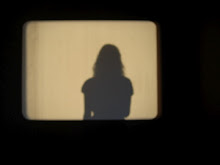"However, one trait of the ancestral personality persists in our aesthetic cravings: the pleasure we take in admiring skilled performances. Human beings have a permanent, innate taste for virtuoso displays in the arts."
Okay, so I'm still struggling with this question, and today I'm thinking about it in terms of art. Art art. Fine art. It's such a loaded question...what makes good art, and who decides on good art, is a question laden with assumptions, prejudice, and snobbery.
One viewpoint suggests there are two schools in which you must separate art to be able to judge its merit: skill and concept.
A recent editorial in the Times pointed out that perhaps we are wired to emotionally respond to skilled works of beauty. What if all this discussion and all this controversy deferred to what people actually felt? I mean, really felt when they looked at a picture/sculpture/objet? Maybe the question would become moot. But I don't think it's possible to expect the many people who analyze for a living to be able to step down from their pedestal. And good art has come from the sanctioned 'movements' of art that have been ordained by the Deciders. It just may not last when the constructs of its value pass into history and all that's left is a skull made of waaaay too many diamonds.
This excerpt from the editorial says it best:
We ought, then, to stop kidding ourselves that painstakingly developed artistic technique is passé, a value left over from our grandparents’ culture. Evidence is all around us. Even when we have lost contact with the social or religious ideas behind the arts of bygone civilizations, we are still able, as with the great bronzes or temples of Greece or ancient China, to respond directly to craftsmanship.....
The appreciation of contemporary conceptual art, on the other hand, depends not on immediately recognizable skill, but on how the work is situated in today’s intellectual zeitgeist. That’s why looking through the history of conceptual art after Duchamp reminds me of paging through old New Yorker cartoons. Jokes about Cadillac tailfins and early fax machines were once amusing, and the same can be said of conceptual works like Piero Manzoni’s 1962 declaration that Earth was his art work, Joseph Kosuth’s 1965 “One and Three Chairs” (a chair, a photo of the chair and a definition of “chair”) or Mr. Hirst’s medicine cabinets. Future generations, no longer engaged by our art “concepts” and unable to divine any special skill or emotional expression in the work, may lose interest in it as a medium for financial speculation and relegate it to the realm of historical curiosity.
In this respect, I can’t help regarding medicine cabinets, vacuum cleaners and dead sharks as reckless investments. Somewhere out there in collectorland is the unlucky guy who will be the last one holding the vacuum cleaner, and wondering why.-Denis Dutton,The New York Times, October 15, 2009
For me, this begs the question of where is the happy medium? Are enough artists making things of beauty that are still original? Yet another impressionist rendering of a sunset on a small village is just as bad as the Hirst pieces Dutton rails against. Perhaps the measure of a true work of art must take into account originality, skill, and beauty, and acknowledge that the three must be linked.
Saturday, November 14, 2009
how to spot true genius, part II
Subscribe to:
Post Comments (Atom)

No comments:
Post a Comment